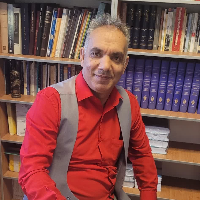Adaptation of the Intellectual Self's Action in"Cheshmhayash and "Del-e-koor" (Based on Herbert Blumer's Symbolic Interaction Theory
Author(s):
Article Type:
Research/Original Article (دارای رتبه معتبر)
Abstract:
The analysis of "symbolic interactionism" based on Blumer's methodology arises from human consciousness of oneself in the experimental world of society. The construction of the 'self' is constructed based on the controversial relationship between (I) and (Me) in a social process. Therefore, in a dynamic and unpredictable way, it explores the characters and shows their individual and collective action. How does 'self' find itself in the novel world? What is the mode of action of the novel is 'self' in the face of social and political construction? His novel depicts a picture of Pahlavi history in which the "collective self" is a mixture of the traditionalist and the modern. The novel "Cheshmhayash" depicts a picture of Pahlavi history in which the "collective self" is a mixture of traditionalist and modernist self. Collective interests are more than individual interests are. Activists are struggling against the authoritarian political system for freedom of thought and freedom of thought. The intellectual is a modern and demanding individual. "Del-e-koor" novel narrates the first and second Pahlavi periods. The self in this novel is the passive, conservative and violent self. In the novel world, individual interests are preferred over collective interests, and in the structure of society, the intellectual acts because of kindness, friendship, and peacemaking.
Keywords:
Language:
Persian
Published:
Research in Narrative Literature, Volume:10 Issue: 3, 2022
Pages:
123 to 142
https://www.magiran.com/p2396718
سامانه نویسندگان
مقالات دیگری از این نویسنده (گان)
-
Representations of Character in Cheshmhayash and Del-e Koor: A Symbolic Interactionist Study
Morteza Hadyan, Mansoureh Sabetzadeh *, Hossein Abolhassan Tanhayi
Literary Theory and Criticism, -
"Intellectual Approach" in the poems of Naser Khosrow Ghobadiyani
*, Farzad Abdolhosain
Journal of Lyrical Literature Researches,



